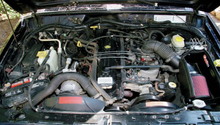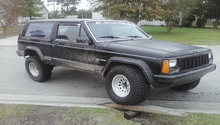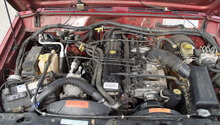Jeep Cherokee 1984-1996: Top 5 Performance Modifications
Jeep equipped the Cherokee with an engine that's adequate enough for the owner looking to travel around town and occasionally drive through some trails. For some owners, that's not enough. This is where performance modifications come into play.
This article applies to the Jeep Cherokee XJ (1984-1996).
Performance modifications range from simple bolt-on parts that will yield small horsepower gains to all out engine design changes radically increasing performance. What best suits your needs depends on several factors such as performance goals, vehicle usage, and budget. Turbo and supercharger kits can cost thousands of dollars while a cat-back exhaust system can be had for only several hundred. Remember that the right combination of performance parts is only as good as the engine tuning that accompanies it. This is especially true for owners with forced induction and internal engine upgrades as a lack of fuel or improper ignition timing can lead to engine failure.
Top Five Performance Parts
Performance parts increase your engine's horsepower and torque, allowing you to accelerate faster and climb over rougher terrain. Increasing the airflow into and out of the engine is the most common way to achieve better performance. When more air and fuel are packed into the combustion chamber, more power is created. The second most common method for increasing performance is through gearing. Thanks to the mechanical advantage created by gear multiplication, the wheels can be turned two times for every one turn of the transmission output shaft, for example. Gears can be sized to match your wheel/tire combination for sizable gains in performance. If a naturally aspirated engine is not capable of the power output you're after, the addition of a turbo or supercharger will be next on the list.
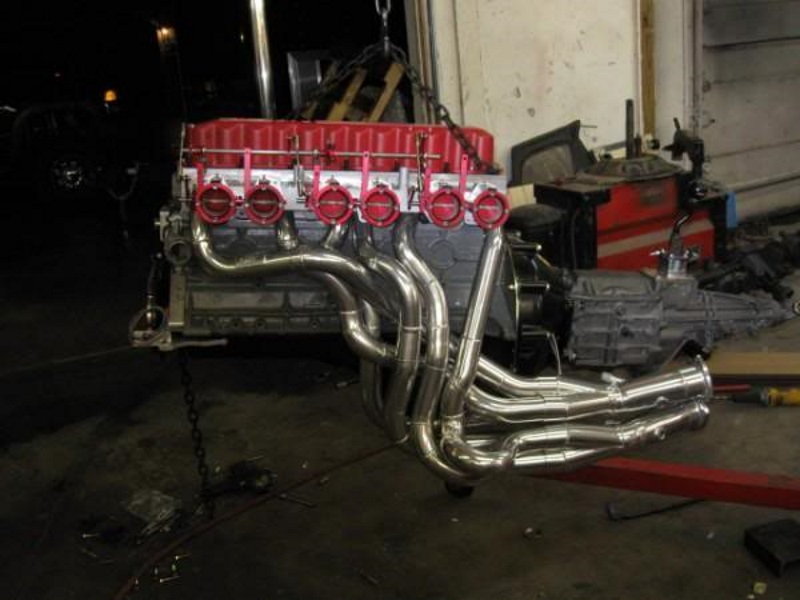
#1 – Exhausts

DIY Cost – $100-$300 for a cat-back exhaust system; $200-$400+ for headers.
Professional Cost – $200+ for labor
Skill Level – Moderate; Exhaust systems are heavy, and removal of rusted nuts/bolts can be tricky. Headers are difficult to access.
Cat-back exhaust systems decrease sharp bends and are typically made with larger diameter piping. A quality cat-back exhaust system will weigh less than stock and include a higher flowing muffler that provides a nice sporty tone. Headers (especially long tube) reduce back pressure near the engine by tuning the piping's bends and length for optimal exhaust flow. A high quality set of headers will reduce your Jeep's weight and help dissipate heat in the engine compartment. Gains of 5-15 horsepower can be seen from a cat-back exhaust and header combo. If your Jeep will be used on the highway, a factory or similar style catalytic converter must be retained.
#2 – Intakes
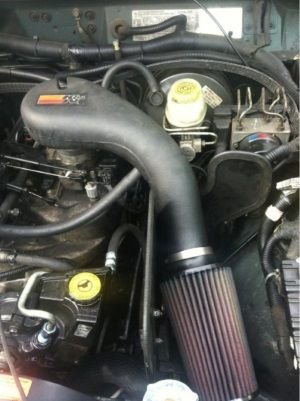
DIY Cost – $100-$200 for a cold air intake; $200-$300 for a throttle body.
Professional Cost – $100-$200 for labor
Skill Level – Easy; Intake and throttle body installation requires the removal of a few easy-to-access components such as the air box and intake piping.
Cold air intakes mount the air filter near the headlight for a cooler intake charge. They also include a high flowing air filter and denser tubing which helps to keep the intake air cool as it enters the engine. Larger bore throttle bodies increase the opening into the intake manifold, reducing an airflow restriction into the engine. Quality made throttle bodies include higher quality springs for improved throttle response. Gains of 5-10 horsepower can be seen with a cold air intake and large diameter throttle body combo.
#3 – Ignition

DIY Cost – $200-$300 for an ignition box; $100-$200 for an ignition coil/distributor; $50-$150 for ignition wires.
Professional Cost – $100-$200 for labor
Skill Level – Easy to Moderate; Ignition coil and ignition wire installation is straightforward and bolt-in. Some wiring may be required when installing an ignition box.
High efficiency distributors, spark plug wires, and ignition boxes all increase the amount of voltage delivered to the spark plug. This creates a hotter spark translating into a more efficient burn throughout the combustion chamber. In addition, some ignition boxes have a setting to adjust ignition timing for increased performance. Gains of 5-10 horsepower can be seen from a combination of spark plug wires, a distributor, and ignition box.
#4 – Rear Axle Gearing
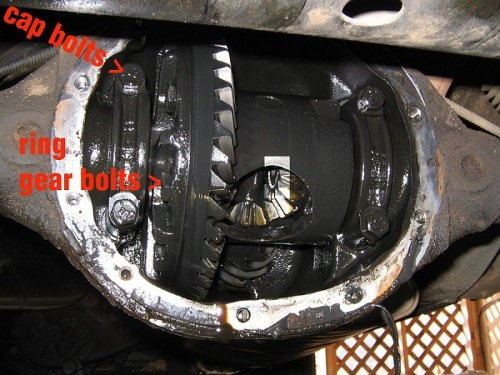
DIY Cost – $100-$200
Professional Cost – $200-$300 for labor
Skill Level – Moderate; Requires disassembly of the rear differential and setting proper bearing clearances.
A differential gearing swap changes the amount of times the wheels will turn in relation to the rotation of the driveshaft. A lower gear (4.56:1 for example) will provide more torque to the wheels than a higher 3.73:1 gear. This works well in off road situations where the user is stuck in a rut and needs maximum torque in the low RPM range to create movement. When the rear gearing is changed, the speedometer must be re-calibrated for an accurate display. This chart shows how your choice of rear gear will change your speed: Jeep Speedometer Gear Tooth Chart.
#5 – Forced Induction
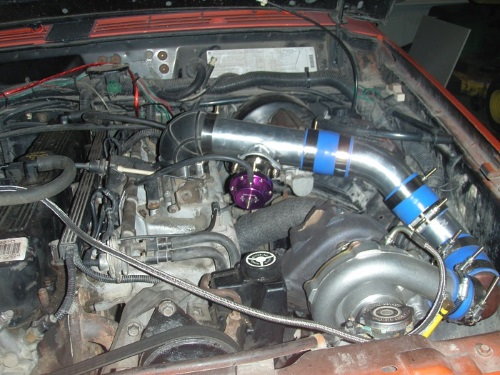
DIY Cost – $1,000-$3,000 for a turbo/supercharger kit
Professional Cost – $400-$800+ for labor
Difficulty – Hard; Installation involves removal of many components. Some welding/fabrication may be required.
Turbos and superchargers force a larger amount of air into the combustion chamber. This increase in airflow is measured in PSI. Turbos are a very efficient way of increasing performance because they allow the engine to breathe easier at all RPM ranges. Superchargers are belt-driven, making them less efficient than turbos, but come with the advantage of no lag. This is ideal for those situations where instant torque is required as full boost can be reached very quickly. When coupled with the right fuel system and tuning software/programmers, forced induction provides the best path for those looking for large performance gains.
Related Discussions
- Performance Mods - Cherokeeforum.com
- XJ Performance Upgrades - Cherokeeforum.com
- Bolt Performance Parts - Cherokeeforum.com

